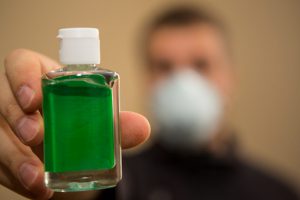 On Monday, April 8th, a total solar eclipse will be visible across North America. During a total solar eclipse, the moon completely obscures the sun as it orbits the Earth, causing it to appear like a dark circle surrounded by a ring of light. The moon will pass the sun from about 2:00 PM to 4:30 PM; in New York, the total eclipse should be visible between 3:00 and 3:30. This type of eclipse is not rare, taking place approximately every 1.5 years. However, they often occur in more remote parts of the world; this eclipse will be the first one to be visible in the United States since 2017.
On Monday, April 8th, a total solar eclipse will be visible across North America. During a total solar eclipse, the moon completely obscures the sun as it orbits the Earth, causing it to appear like a dark circle surrounded by a ring of light. The moon will pass the sun from about 2:00 PM to 4:30 PM; in New York, the total eclipse should be visible between 3:00 and 3:30. This type of eclipse is not rare, taking place approximately every 1.5 years. However, they often occur in more remote parts of the world; this eclipse will be the first one to be visible in the United States since 2017.
While this event will make for a rare and interesting sight, it’s important to take safety precautions to protect your eyesight if you plan to view it. Any amount of time spent looking at the sun can permanently damage your retina and potentially cause blindness. Make sure to follow these tips to protect your eye health while watching the eclipse:
Do: View the eclipse with glasses that contain solar filters or hand-held solar viewers. Ordinary sunglasses do not sufficiently protect you against the harmful effects of looking directly at the sun, even during an eclipse.
Do: Make sure any eclipse glasses or viewers you purchase come from a reputable vendor that verifiably includes solar filters into their products.
Do: Read any instructions that come with your eclipse viewer or glasses. If you plan to look at the eclipse with your child, make sure to help them understand how to use these tools to view the sun safely.
Don’t: Look at the sun through cameras, telescopes, or binoculars that do not contain a solar filter, even if you are wearing glasses or using a viewer that contains a solar filter at the same time. These devices can concentrate the sun’s rays in a way that damages the solar filter.
Don’t: Use your eclipse glasses or viewer if they have visible damage or scratches on them, as these can reduce their protective effects.
If you’ve experience eye damage due to the effects of the sun, you can visit an ophthalmologist at Flushing Hospital Medical Center. To schedule an appointment, please call (718) 670-5486.
All content of this newsletter is intended for general information purposes only and is not intended or implied to be a substitute for professional medical advice, diagnosis or treatment. Please consult a medical professional before adopting any of the suggestions on this page. You must never disregard professional medical advice or delay seeking medical treatment based upon any content of this newsletter. PROMPTLY CONSULT YOUR PHYSICIAN OR CALL 911 IF YOU BELIEVE YOU HAVE A MEDICAL EMERGENCY.








